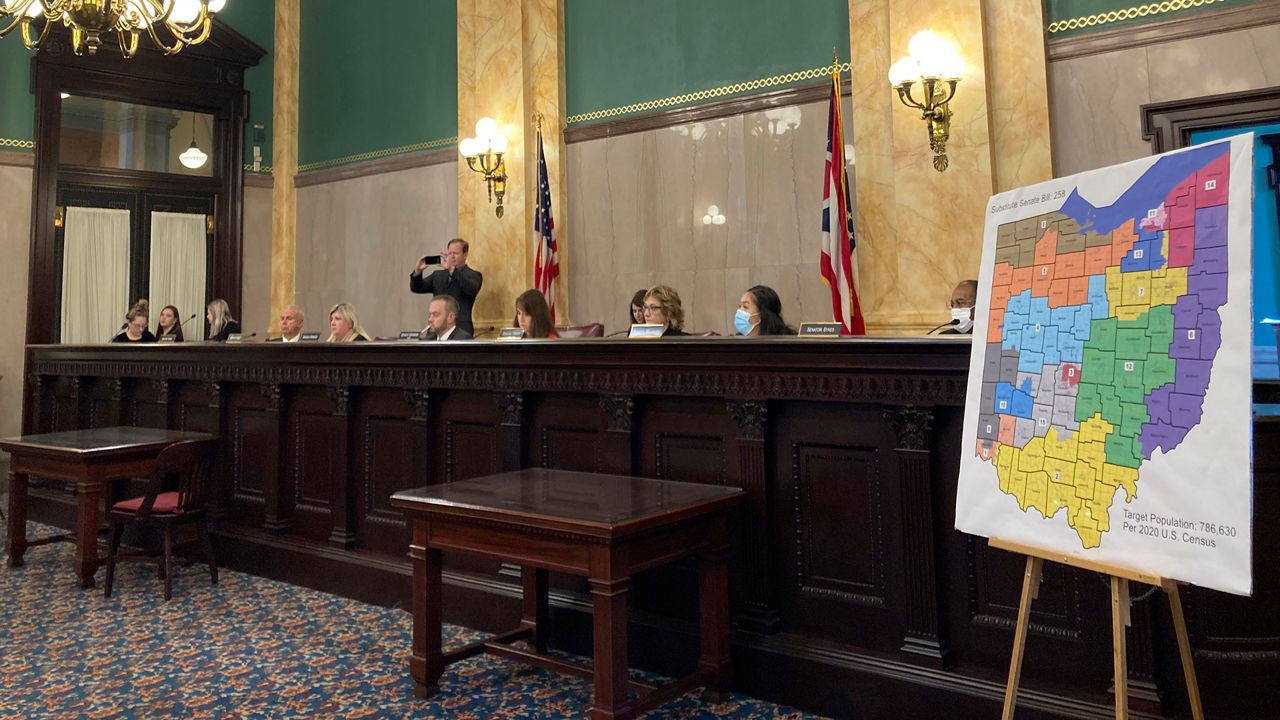COLUMBUS, Ohio — A second lawsuit challenging Ohio’s newly drawn congressional districts was filed on Tuesday, claiming the districts give Republicans an unfair advantage.
The lawsuit was filed by the ACLU of Ohio, the American Civil Liberties Union and Covington & Burling LLP. Previously, the National Redistricting Action Fund filed a similar lawsuit challenging the districts.
"The newly adopted congressional map is an affront to the Ohio Constitution and our democracy. Despite demanding reforms at the ballot box in 2018, Ohio voters are facing an even more extreme gerrymander than the congressional districts that they've been forced to live with for the past decade," Jen Miller, Executive Director of the League of Women Voters of Ohio, said in a statement. "From start to finish, mapmakers shamefully defied voter expectations of having a transparent, bipartisan, and public process that resulted in congressional districts that serve voters — not politicians. Ohioans deserve better."
While U.S. law requires states to redraw U.S. House district boundaries every decade, the boundaries approved by the House and Senate would only be effective for four years. A 2018 referendum approved by voters states that maps that don’t get bipartisan support can only be enacted for four years.
The referendum states that districts cannot “unduly favor or disfavor any political party or its incumbents.”
The new maps was approved in nearly party-line votes in the Ohio House and Senate before getting Gov. Mike DeWine’s signature. Republicans have defended the maps.
“If it’s all about all gerrymandered districts, tell me why the governor of Ohio, the Secretary of State, the attorney general, the treasurer, the auditor is a Republican,” said House Majority Floor Leader Bill Seitz. “Is the whole state gerrymandered or is Ohio a red state?”
The finalized map Republicans unveiled appeared to make several districts more competitive than previously proposed GOP maps. According to the bill, the map would include six Republican-leaning districts, two Democratic-leaning districts and seven competitive districts.
“When compared to the other proposals offered from House and Senate caucuses, both Republican and Democrat, the map in SB 258 makes the most progress to produce a fair, compact and competitive map,” DeWine said. “The SB 258 map has fewer county splits and city splits than these recent proposals and the current congressional map.”
Advocates for fair districts, however, claim the maps would result in 12 safe Republican districts.
"Under the enacted plan, the Republicans can anticipate winning 67% to 80% of the congressional seats — even though they are only likely to obtain about 55% of the vote. The Ohio Constitution flatly prohibits that outcome," said Robert Fram of Covington & Burling LLP.



